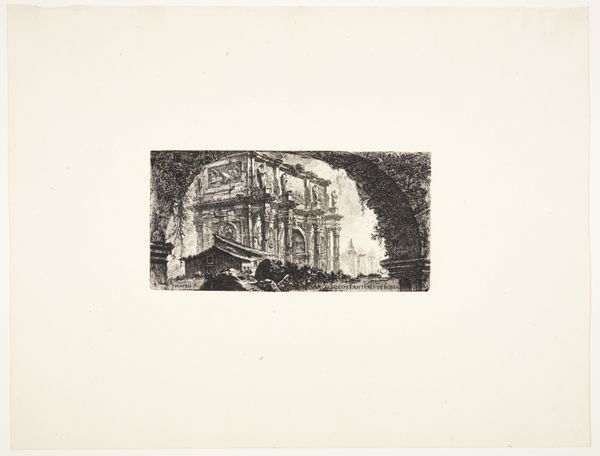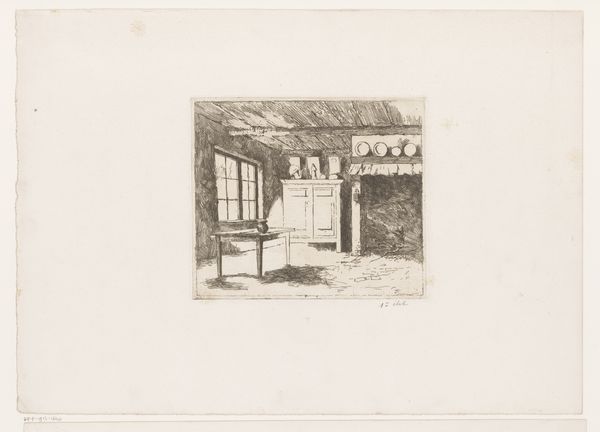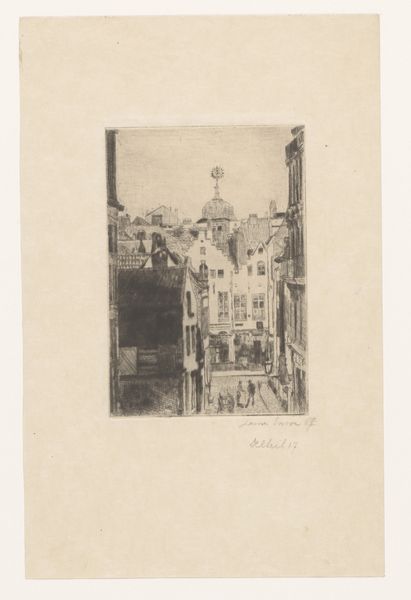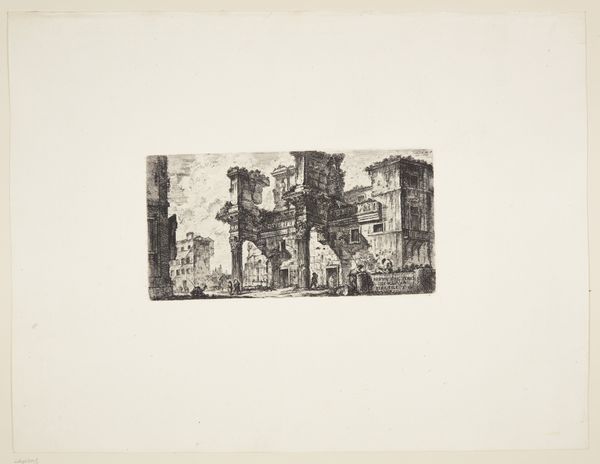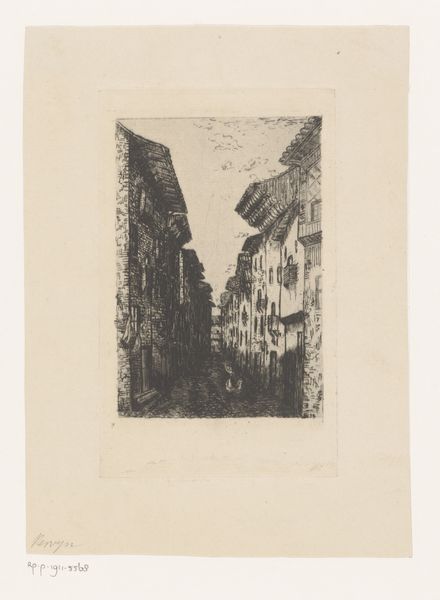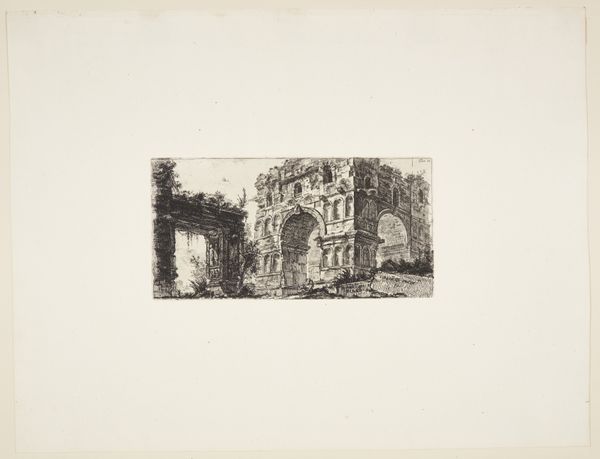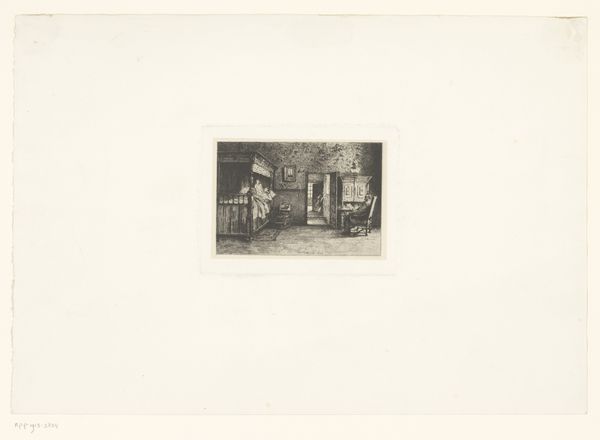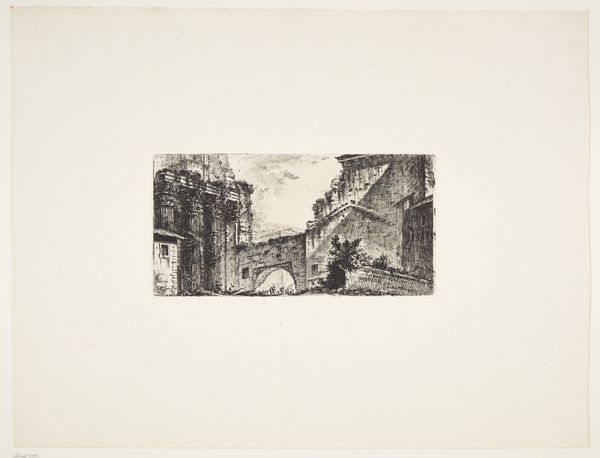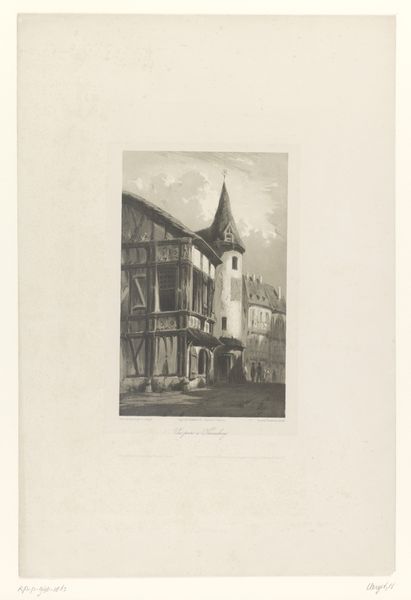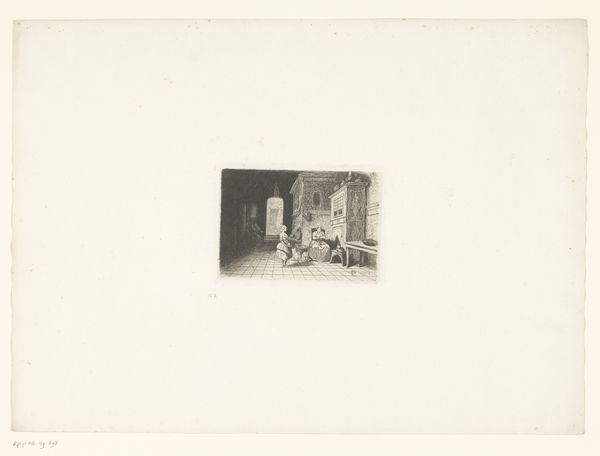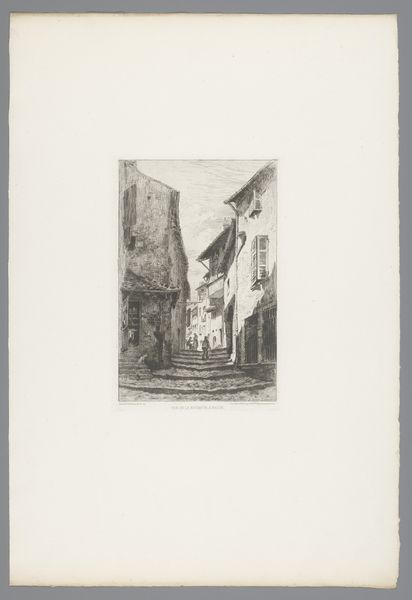
print, etching, architecture
# print
#
etching
#
etching
#
cityscape
#
architecture
#
realism
Dimensions: 5 5/8 x 9 1/8 in. (14.29 x 23.18 cm) (plate)11 3/4 x 15 5/8 in. (29.85 x 39.69 cm) (sheet)
Copyright: Public Domain
Curator: Rudolf von Alt created "Der doppel-erker der alten Burg in Klosterneuberg"—that’s "The Double Bay of the Old Castle in Klosterneuberg"—an etching dating back to 1896. It resides here at the Minneapolis Institute of Art. Editor: My first thought is of secret assignations, maybe clandestine meetings occurring under the shadows of these ornately carved arches! There's a hushed quality to the line work. Curator: Consider, though, that architecture during Alt's era functioned as more than just background. Buildings embody power dynamics, the social strata visibly expressed through stone and ornamentation. This wasn't merely about private trysts; it was about claiming space and exhibiting authority. Editor: Yes, the architecture does convey a powerful aura. But it’s more than just displaying dominance. Etchings like this popularized architectural marvels. Take for instance, those delicate traceries above each arch – it all invites closer examination. They offered ordinary citizens a way to 'own' and internalize this structure, symbolically or imaginatively participating in what the architecture represents. Curator: That imagined ownership extends, crucially, to understanding who was excluded. Where are the workers? Who truly benefits from these grand structures? These buildings can symbolize privilege built, quite literally, on the backs of others. Editor: I find, too, there’s something lasting about these buildings. A kind of memorialization of what stands. This double bay window offers symmetry, promising some sort of continuity. These images allow architectural traditions and cultural norms to carry forth for generations, shaping identity. Curator: Exactly. These etchings can inadvertently solidify societal roles and norms if they’re consumed uncritically, reifying established patterns of control within public and private life. What purpose, ultimately, does ennobling architecture serve when many were systemically denied access to the same beauty? Editor: It becomes evident, considering our differing viewpoints, the degree to which the lasting cultural significance of a single, precisely crafted double bay continues sparking multifaceted discourse. Curator: Ultimately, von Alt's work asks us to remember how buildings are rarely neutral stages—rather, they're arenas where history, politics, and personal desires converge.
Comments
No comments
Be the first to comment and join the conversation on the ultimate creative platform.
